Learn how to block certain sites from showing up in Google results on popular Mac and Windows browsers to refine your queries and improve your search experience.
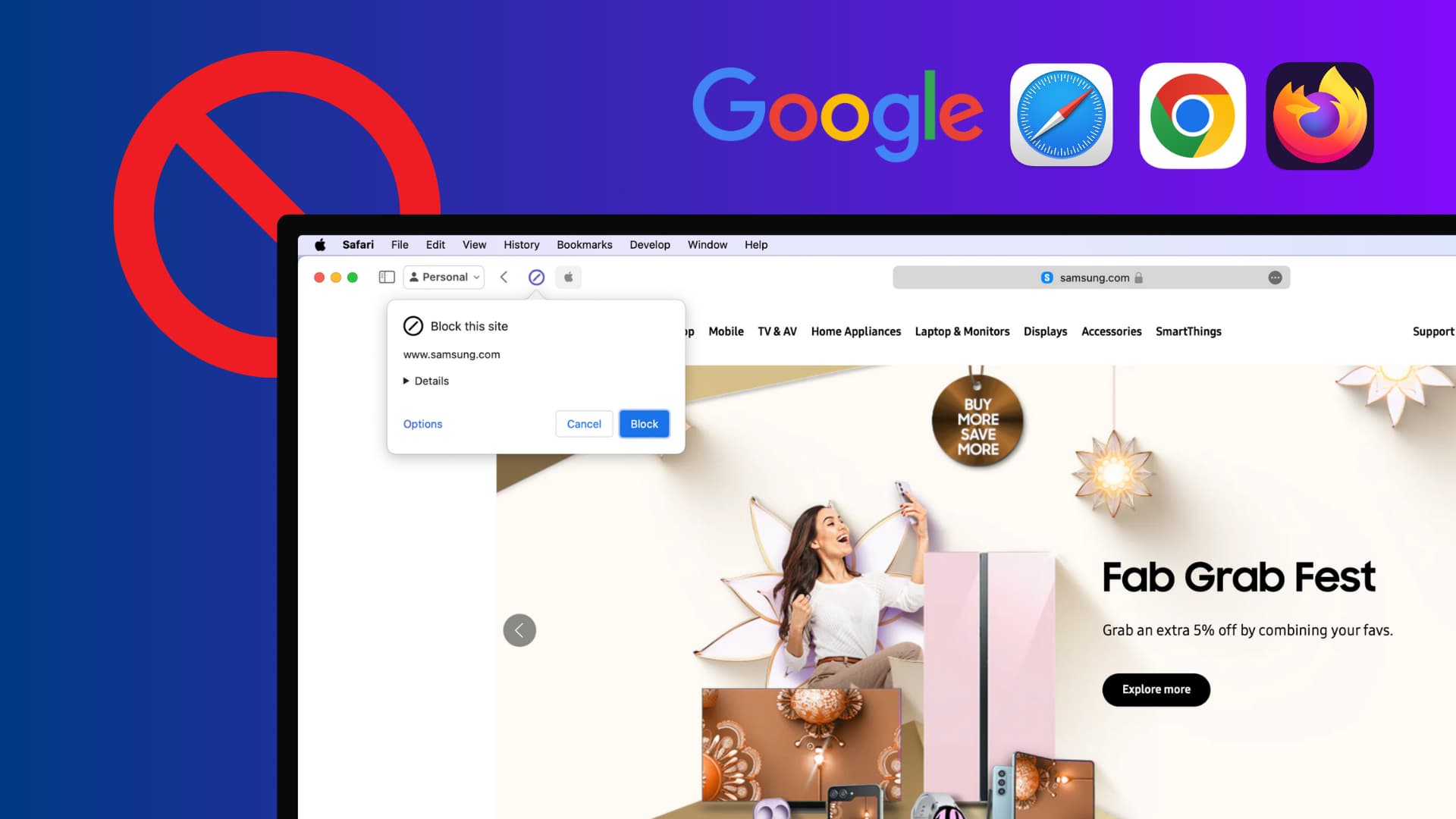
Why block a website from Google search results
- You don’t find the site helpful
- The site is harmful or provides low-quality content
- The site bypasses your safe search and adult settings
- The site has paywalled content
Block a site on once
To block a particular site from showing up in Google search results, add -site:URL but replace “URL” with specific website address. For example, to stop CNET’s articles from appearing in search results for questions about the best phone to buy (because they’re written by AI and filled with errors), your search query would be:
Best Phone to Buy -site:cnet.com
Turn on Google safe search
If you’re worried your child may accidentally visit an improper or adult website, turn on safe search on Google.
1) Visit Google.com and click Settings in the bottom-right corner, then choose Search settings.
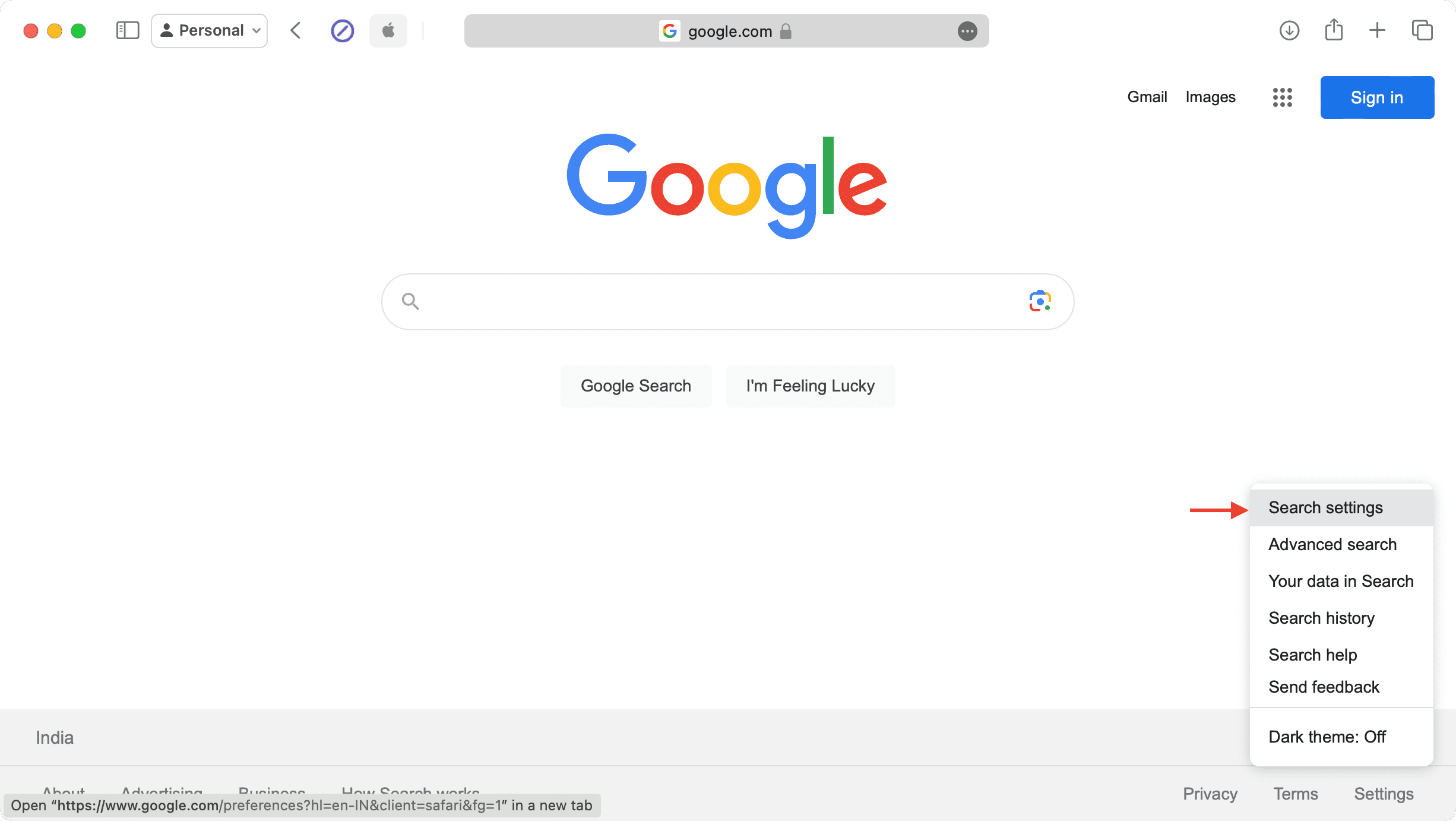
2) Click the current option next to SafeSearch.
3) Select Filter to activate Google SafeSearch, which will exclude explicit images, text, and links from search results.
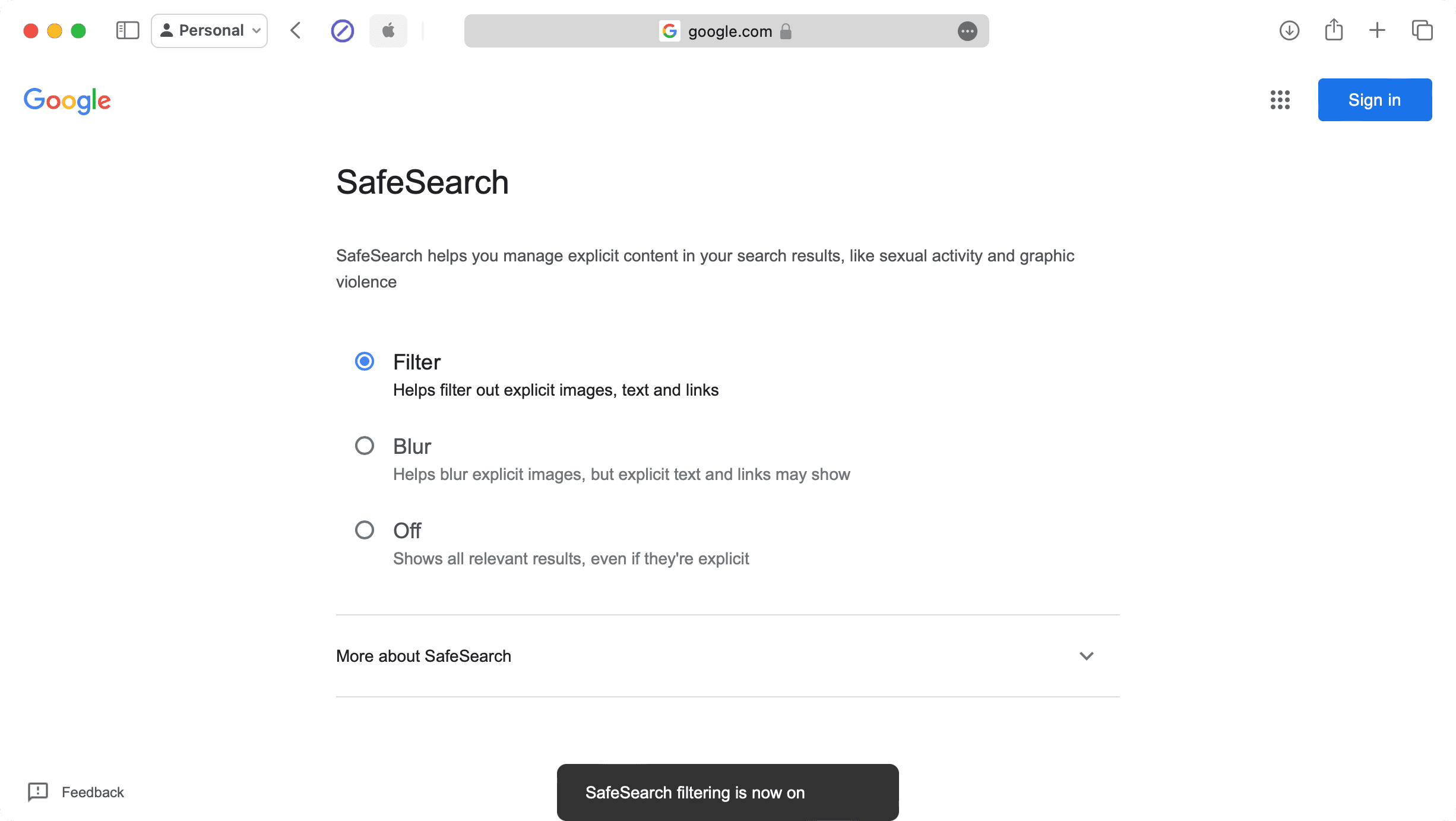
Use a browser extension to block websites from search results
Browser extensions are among the best ways to exclude specific sites from Google search results. The methods described here may also work in Bing, DuckDuckGo and other search engines.
Safari
uBlacklist is a great tool to remove unwanted websites from search results, and it’s available for Safari, Chrome, and Firefox. If you don’t want, say, Apple’s website to appear in Google search results, just add the word “apple” to uBlacklist. No Apple pages will appear in your results even if you explicitly search for “apple.” Related results from non-Apple websites, such as the company’s official YouTube page or the official Apple account on X, still appear in search results because they originate from entirely different websites.
1) Download uBlacklist from the Mac App Store.
2) Open Safari and click a banner on the top asking to “Turn On Extension.” If you don’t see it, click Settings > Extensions in the Safari menu and tick the box for uBlacklist to activate the extension.

3) Visit Google.com and search for the site you’d like to block, then click the uBlacklist icon at the top and permit the extension to run on Google.

Refresh the webpage and hit “Block this site” next to a website. You can also visit said website, click the uBlacklist icon in the Safari toolbar, and choose Block.
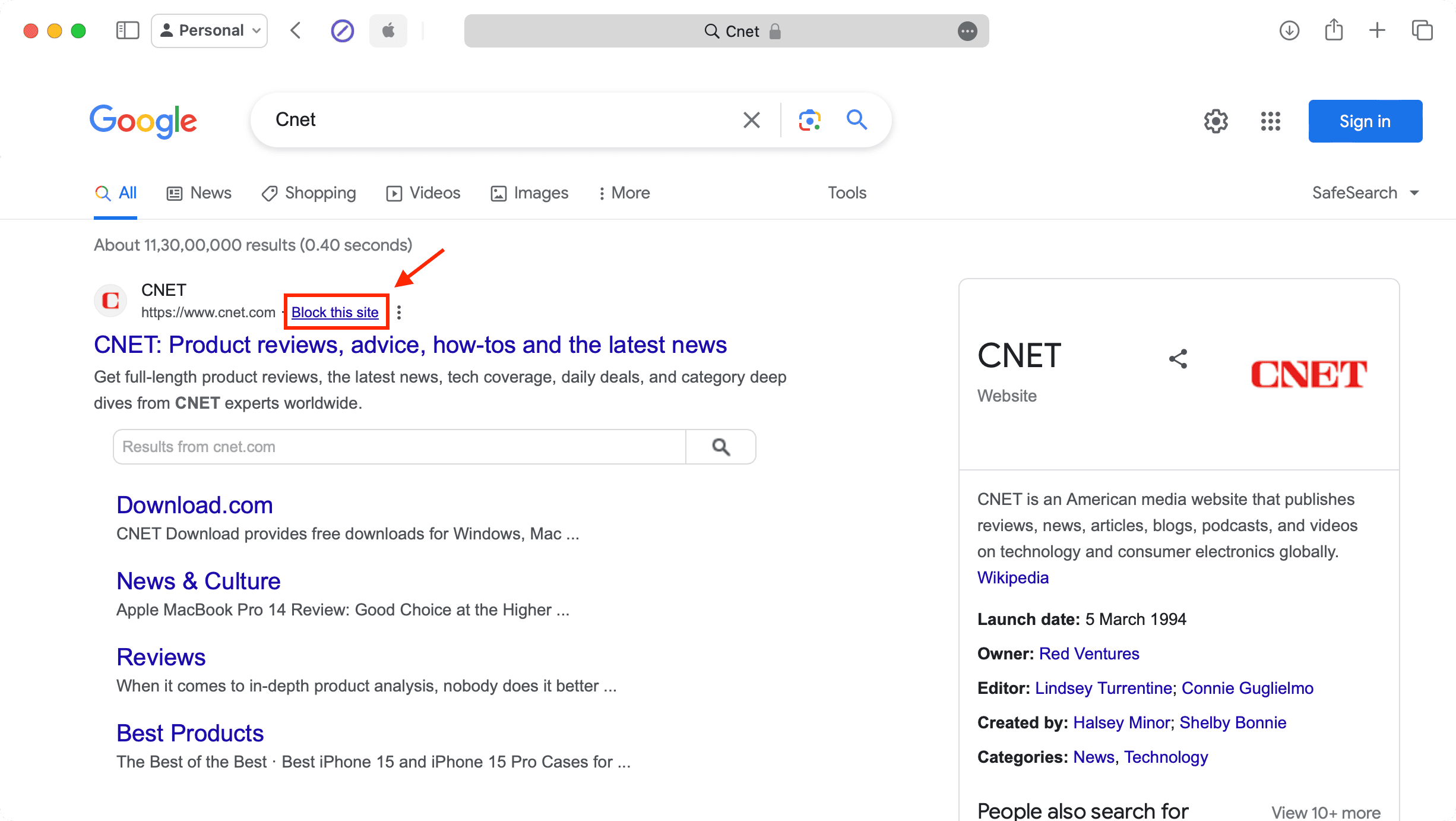
4) To unblock a site, click the uBlacklist icon > Options, remove it from the list, and hit Save.
Google Chrome
If you use Chrome instead of Safari, the same uBlacklist extension is available for Google’s browser. Another recommendation is the Google Search Ad Remover And Customizer extension which can hide ads from search results or highlight the ad section to better distinguish between organic results and paid placement. Americans lose billions of dollars in various scams every year because bad actors pay Google to run ads for these scams at the top of search results.
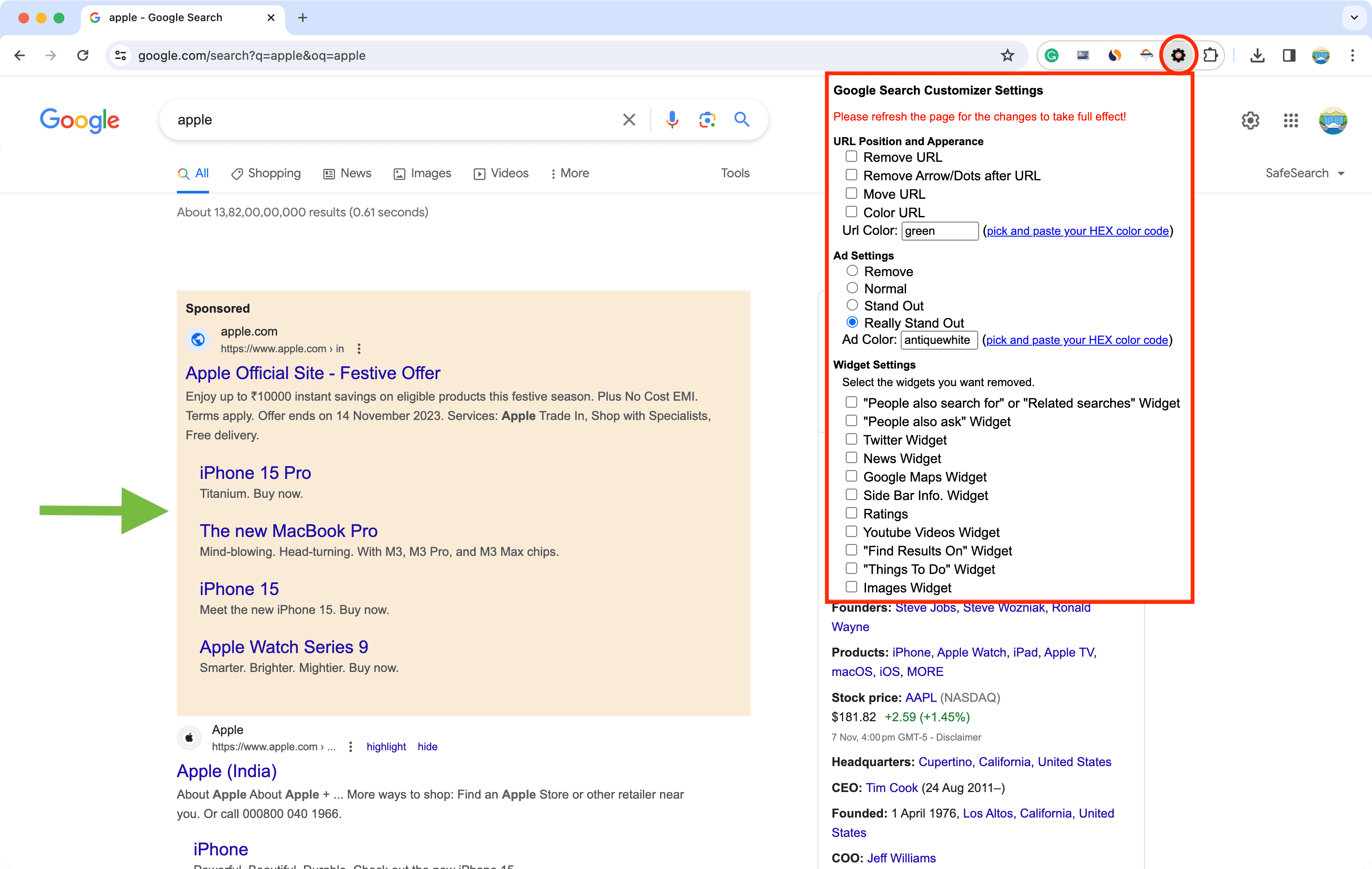
If you’re looking for the Search Filter and Search Engine Spam Blocker extensions, they’re no longer available on the Chrome Web Store.
Firefox
I’ve spent a considerable amount of time trying to find a Firefox extension other than uBlacklist that would get the job done, but found none. What I did discover are the following extensions which might be useful.
I. BlockSite: This extension will block specific searches instead of websites. You can block any URL, website, or keyword with BlockSite. For example, add the “download” keyword to the extension to block all searches containing the keyword ‘download,’ such as “songs download.”
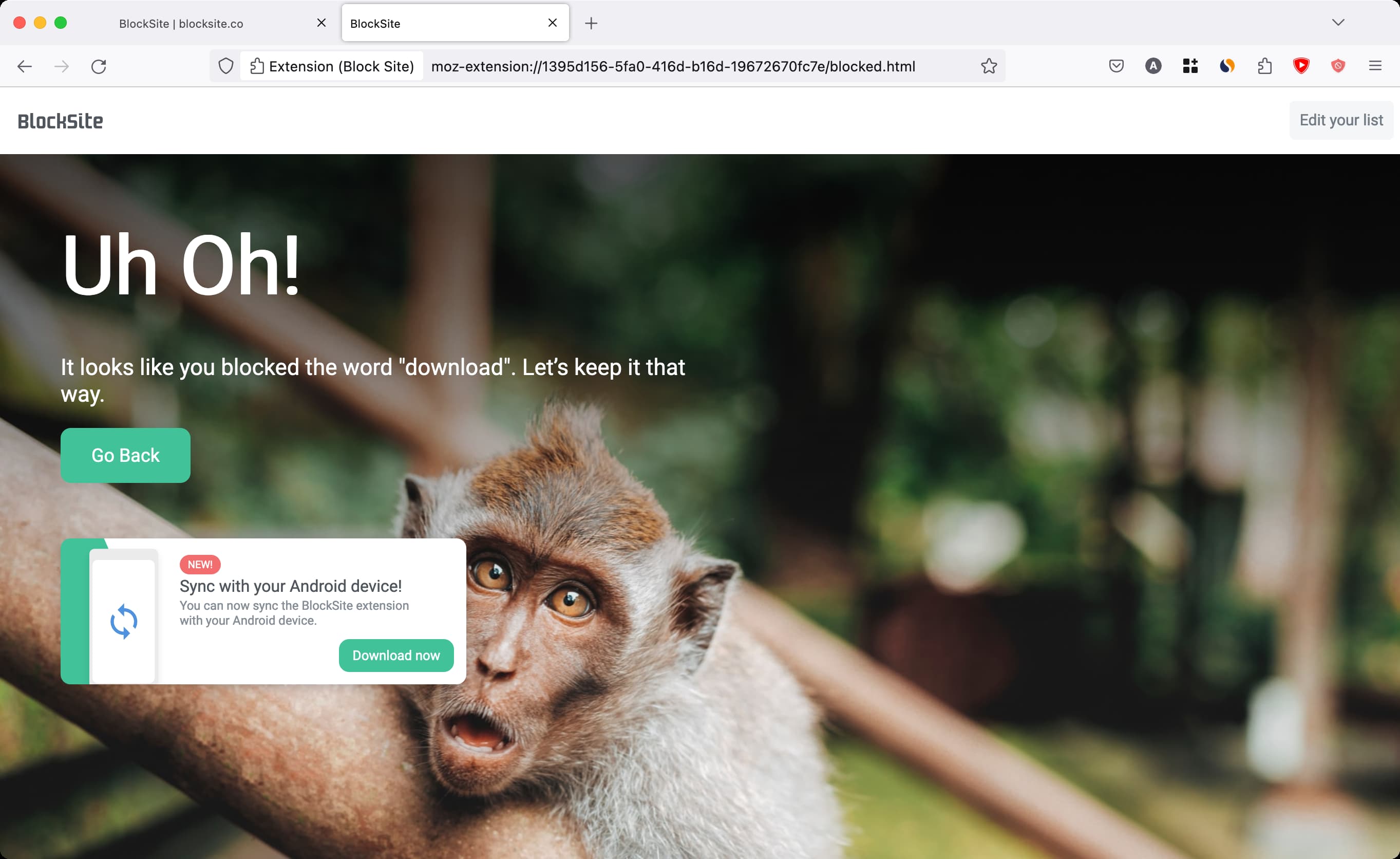
II. Block Site by Ray: This extension blocks attempts to visit a specific website by following a link in search results or entering the URL manually. You can download Block Site from the Firefox add-ons store.

III. Website Blocker by Wesley Branton: The Website Blocker extension stops a website from loading when you visit it directly or via search results. Enter a website URL in the extension settings, then add it and tick the checkbox to activate blocking.
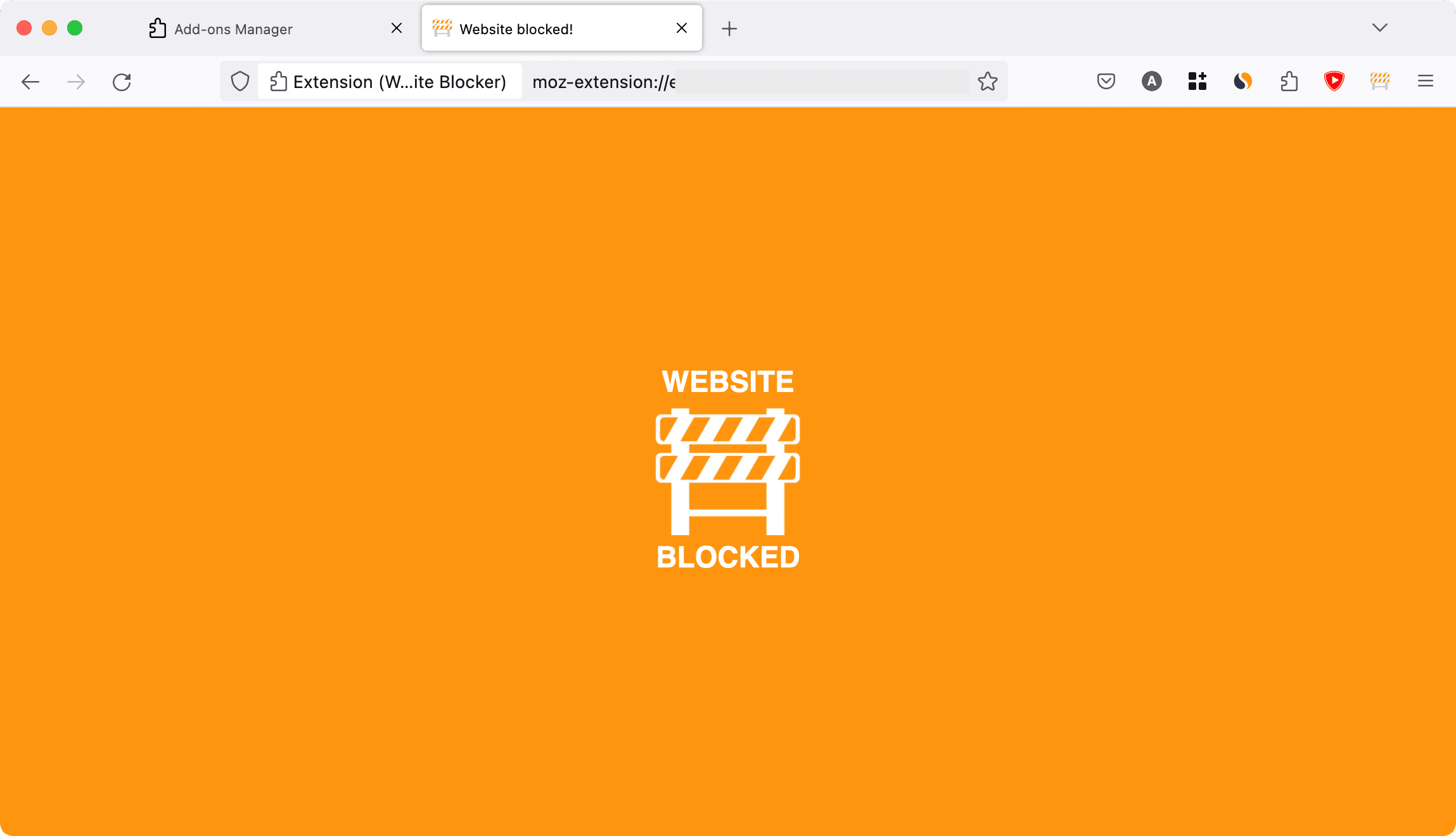
Also, check out: